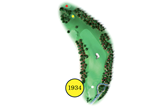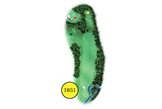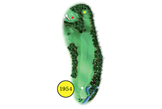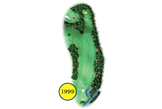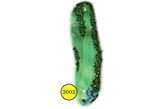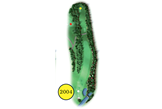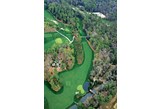The changing face of Augusta
Published: Last updated:
How the 11th hole has changed over the years typifies the whole course.
The late golf writer Charles Price said it best: Augusta National was never the most revolutionary golf-course design in America, but it certainly was the most evolutionary. Of course, it was evolution sped up considerably by man.
The moment the inaugural tournament concluded in 1934, club officials were assessing ways to improve their Georgia peach.
They reversed the nines, for instance, then spent the next few summers chopping away at selected holes with shovels and pick-axes, under the direction and approval of co-designer Robert Tyre Jones Jnr, the retired legendary amateur who also co-founded the club.
Even Jones didn’t realise the drumbeat of change would never cease at Augusta.
Champion golfers, course architects, even long-time Masters chairman Clifford Roberts subsequently suggested modifications that were implemented. As time ticked on, holes were further altered to address playability, agronomics, spectator convenience and, most recently, 21st-century club and ball technology.
Our challenge was to graphically document every architectural change at Augusta National in a manner never attempted before. To do it, we enlisted the talents of computer artist Chris O’Riley to prepare a succession of detailed diagrams based upon 30-plus years of research.
What you see here is a presentation of the transformation of the par-4 11th, showing every step in its progression from a pushover driveand- pitch to today’s 505-yard twoshotter, the opening into Augusta’s famed Amen Corner.
Here’s how the 11th hole has changed since 1934. You can see illustrations in the gallery (see above right)
1934: 415 YARDS
It was the second hole in 1934, the 11th thereafter. The hole was designed by Alister MacKenzie without a bunker, but Bob Jones added one in the centre of the fairway, over a crest 240 yards out. It reminded him of St Andrews’ blind bunkers. The best play was a drive to its left, leaving an approach played away from the branch of Rae’s Creek left of the green. Mounds at the front right of the green deflected some shots.
1951: 445 YARDS
An elevated tee was chopped from pines left of the 10th green, straightening and lengthening the 11th. The fairway bunker was filled in. The creek left of the green was dammed to form a pond, and areas right of the green were elevated. Another dam raised Rae’s Creek, and the putting surface was reshaped to create three pin placements near the water. Clifford Roberts, Robert Trent Jones and Byron Nelson all claimed credit for the ideas.
1954: 445 YARDS
Because back hole locations proved not particularly hazardous, two bunkers, built into mounds for visibility, were installed behind the green. In 1965, the green was rebuilt to elevate it two feet. But a 1990 flood still washed away the putting surface. It was reconstructed to previous contours before the 1991 Masters, using then-new laser technology and a topographic map the club had on file.
1999: 455 YARDS
The green was rebuilt yet again to raise the putting surface and surrounds another two feet (including the swale from which Larry Mize chipped in to win the 1987 Masters). The pond was raised by a foot, two bunkers behind the green were replaced by one on the left, and the green was extended to bring hole locations within 20 yards of Rae’s Creek. The tee was shifted to compensate for the loss of a large pine 180 yards in front.
2002: 490 YARDS
The tee was moved back 35 yards, and five yards to the right, nearly against the tree line. The fairway was regraded to eliminate kicks towards the green. “We moved this tee back three years ago, but we had to do it again because the hole was playing so short,” said Tom Fazio, architect of all changes since 1998. “Why play safe when you’re hitting a 9-iron or sand wedge for your second shot? We’ve made it a middle-iron approach again.”
2004: 490 YARDS
To further tighten the drive, 36 mature pine trees were transplanted to the right of the landing area. “It continues our long-standing emphasis on accuracy off the tee,” said chairman Hootie Johnson. Fourtime Masters champion Arnold Palmer, a club member, was critical of the new pines, pointing out that they removed one of the prime spectator vantage points on the back nine.
2006 to today: 505 YARDS
The tee was moved back again, making the 11th hole the first par 4 at Augusta National to measure more than 500 yards. Later, in reaction to Arnold Palmer’s criticism, several pines on the right were removed. “The result allows for enhanced patron viewing,” the club said. But grass beneath remaining pines was replaced by pine straw, and more dogwoods were added left of the fairway, to punish errant drives. There have been no changes since.


